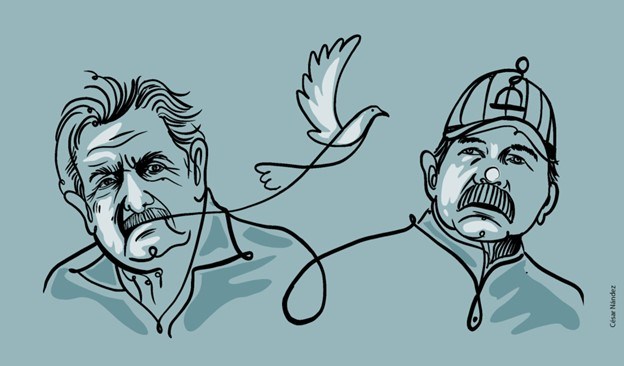
In Latin America, seven presidents have guerrilla backgrounds. Those who have opted for gradual changes were more successful, while those who chose abrupt radical projects failed.
By Eduardo Pizarro Leongomez (lationoamerica21)
HAVANA TIMES – After the triumph of the Cuban Revolution on January 1, 1959, seven ex-guerrillas have taken office in Latin America: Fidel and Raul Castro, Daniel Ortega, Jose Mujica, Dilma Rousseff, Salvador Sanchez Ceren and Gustavo Petro, who have left good and bad experiences. In which of the two options is the Colombian government positioning itself?
As seen in the table below, in six Latin American nations former guerrillas have assumed the state’s leadership in the last decades. In two countries, Cuba and Nicaragua, as a result of the only two triumphant revolutions in Latin America (1959 and 1979), which brought down the dictatorial governments of General Fulgencio Batista and the Somoza clan. In two other countries, Brazil and Uruguay, former members of defeated guerrilla groups, Jose Mujica and Dilma Rousseff, after years of prison and painful torture, rose from the ashes and triumphed in transparent elections in 2010 and 2011, respectively. Finally, in two nations, El Salvador and Colombia, former members of guerrilla movements that signed peace agreements and made the transition “from arms to politics” were elected heads of state, Salvador Sanchez Ceren (2014) and Gustavo Petro (2022).
We do not include Hugo Chávez in this picture, because, even though as a young officer he was under the influence of the most emblematic of the guerrilla leaders of the time, Douglas Bravo — who did not embrace the peace process of the late 1960s and continued in arms through the Party of the Venezuelan Revolution and its Armed Front of National Liberation (PRV-FALN)—, he broke his moorings in 1986. That year, Chavez formed a clandestine military faction called the Bolivarian Revolutionary Movement (MBR-200), which would be key to his rise to power years later. That’s to say, Chávez was not properly a guerrilla fighter.
Table – Ex-guerrilla presidents in Latin America
The brothers Fidel and Raúl Castro were the head of the state for 59 years, between 1959 and 2018, and progressively established a single-party system. In 1961, the 26th of July Movement merged with the Popular Socialist Party and other organizations to form the so-called Integrated Revolutionary Organizations (ORI), which, after many ups and downs, on October 3, 1965, took the definitive name of the Communist Party of Cuba (PCC), which governs uninterruptedly until today. Fidel Castro was the world’s longest-serving president from 1900 to the present. He headed the state for 49 years between 1959 and 2008—, was replaced by his brother Raul, who was replaced, in turn, by his hand-picked successor Miguel Diaz-Canel.
Cuba ceased many years ago to be the “New Jerusalem” —as it was for my leftist generation— and, today, unless there is a surprising change of course (for example, the adoption of the current model of the Socialist Republic of Vietnam, with its extensive market economy), it is experiencing an even gr


